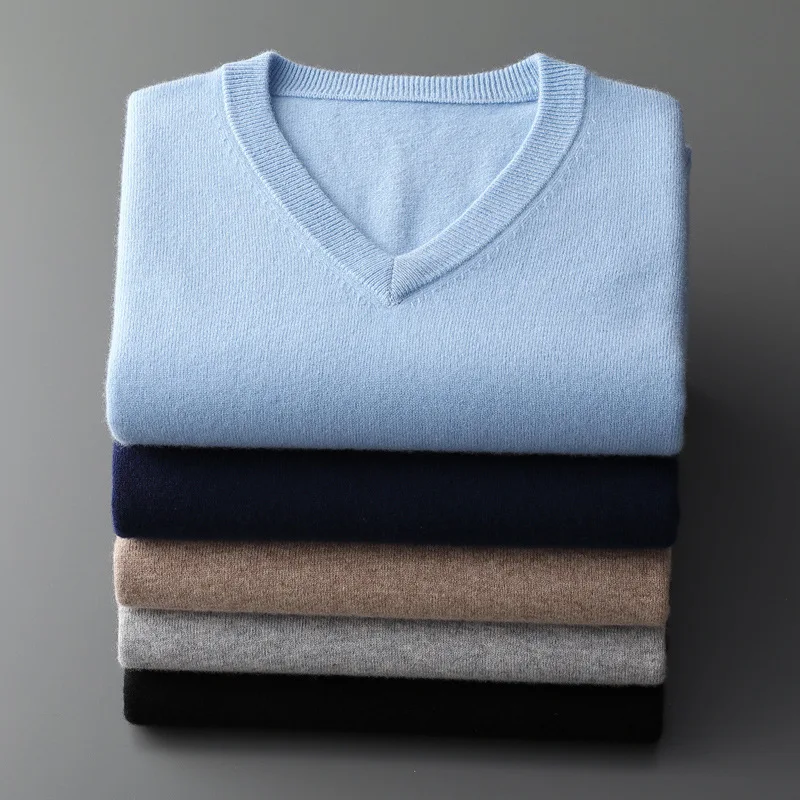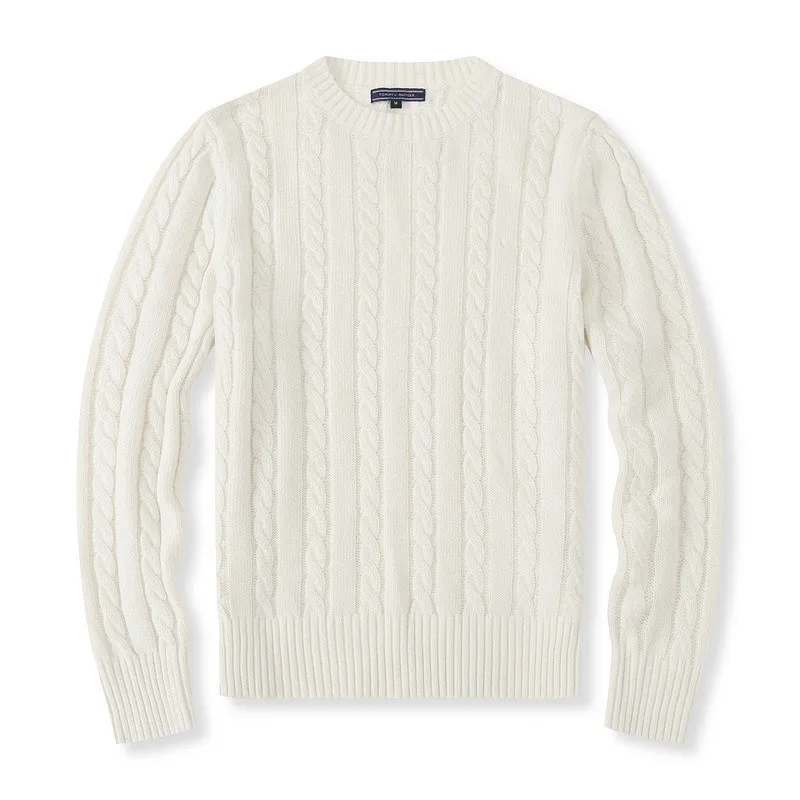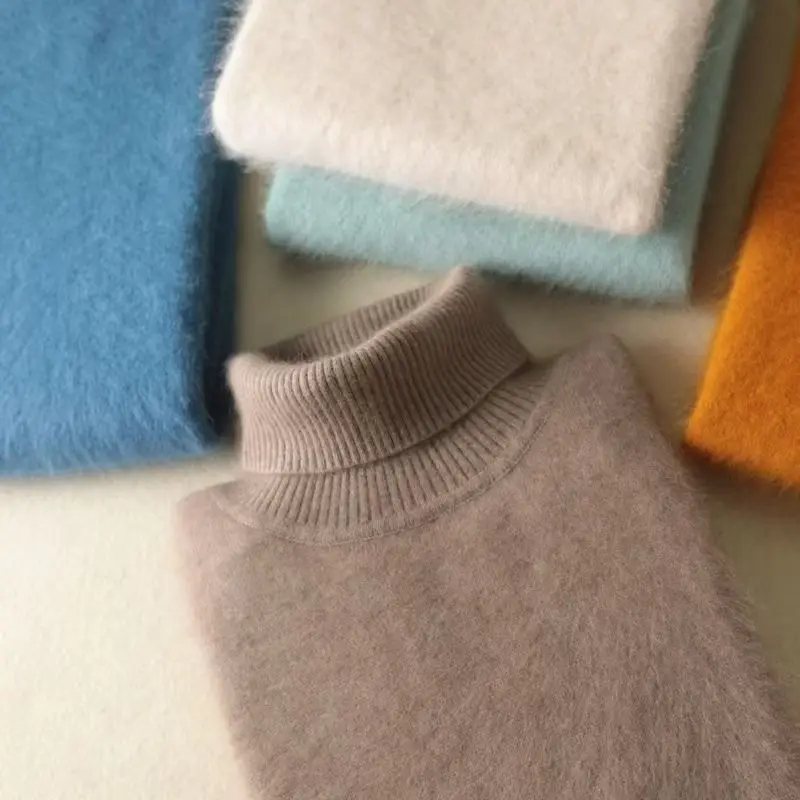Introduction: Understanding Cashmere Pilling and Its Causes
Cashmere pilling—those small, fuzzy balls that form on the surface of your beloved sweaters and scarves—is one of the most common frustrations for owners of luxury knitwear. These tiny fiber balls not only affect the appearance of your garment but can also make an expensive piece look worn and old before its time.
Pilling occurs naturally with cashmere due to its unique fiber structure. Cashmere comes from the soft undercoat of cashmere goats and consists of extremely fine, short fibers. While this structure is what makes cashmere incredibly soft and warm, it also makes it more susceptible to pilling than other materials.
Even the highest quality cashmere can experience some degree of pilling. This is because:
- The extremely fine fibers (under 16 microns in thickness) tend to work loose from the yarn with wear and friction
- These loose fibers then tangle together on the surface, forming small balls or pills
- The inherent softness that makes cashmere luxurious also makes it vulnerable to this effect
It’s important to understand that pilling doesn’t necessarily indicate poor quality cashmere. In fact, there’s an interesting contradiction: the softer and finer the cashmere, the more likely it is to pill initially. However, higher-quality cashmere with longer fibers (exceeding 36mm) will typically pill less over time than lower-quality options.
Throughout this guide, we’ll explore effective strategies for preventing pills from forming, safely removing existing pills, and maintaining your cashmere’s beauty for years to come. Understanding proper styling tips for cashmere cardigans and implementing complete cashmere care practices will help extend the life of your luxury garments significantly.
The Science Behind Cashmere Pilling: Why It Happens
To effectively prevent and treat pilling, it’s important to understand exactly why it happens in the first place.
External Friction Factors
The most common cause of pilling is external friction. This occurs when your cashmere rubs against rough surfaces, including:
- Crossbody bags and purse straps across the front or side of sweaters
- Desk edges where your sleeves rest while working
- Seatbelts that continuously rub across chest areas
- Arm friction from normal movement
Each instance of rubbing creates tiny areas of agitation that gradually loosen fibers from the main yarn structure.
Internal Fiber Mechanics
Cashmere’s unique composition plays a major role in pilling. The yarn consists of many individual fibers twisted together. Over time and with wear:
- Shorter fibers work themselves loose from the main yarn structure
- These loose fibers migrate to the surface of the fabric
- Once on the surface, these fibers tangle with other loose fibers
- This tangling creates the small balls or “pills” we see
Fiber Quality Impact
The length and quality of cashmere fibers directly affect pilling resistance:
- Longer fibers (over 36mm) remain more securely twisted in the yarn
- Shorter fibers are more likely to work loose and form pills
- Finer fibers (under 16 microns) provide incredible softness but may be more prone to initial pilling
Yarn Construction and Weave Density
The way cashmere is spun and knitted significantly impacts its pilling tendency:
- Tightly twisted yarns resist pilling better than loosely twisted ones
- Denser weaves provide less opportunity for fibers to work loose
- The number of plies in the yarn affects durability and pilling resistance
Impact of Washing and Care
Improper care dramatically accelerates the pilling process:
- Harsh detergents break down the natural structure of the fibers
- Excessive agitation during washing loosens fibers prematurely
- Improper drying methods can stress and weaken the fiber structure
Understanding these fundamental causes helps explain why the expert guide to preventing cashmere pilling focuses on minimizing friction, proper cleaning techniques, and gentle handling to preserve your garments.
Proactive Prevention: Essential Strategies to Minimize Pilling
Strategic Wearing Habits
How you wear and treat your cashmere daily has a tremendous impact on pilling prevention:
- Rotate your cashmere pieces regularly, allowing at least 24 hours of “rest” between wearings so fibers can recover their shape
- Be mindful of friction points where bags, purses or backpacks might rub against your garment
- Consider using shoulder pads in bags to distribute pressure more evenly
- Layer with smooth fabrics (like silk or cotton) between your cashmere and rougher outerwear
- Remove cashmere sweaters by crossing arms and gently lifting from the bottom hem rather than stretching the neck
High-quality cashmere sweaters deserve thoughtful wearing practices to maintain their beauty. Consider building a small collection so you can rotate pieces rather than wearing the same item repeatedly.
Optimal Washing Techniques
Proper cleaning is perhaps the most crucial aspect of pilling prevention:
Hand-Washing (Recommended Method)
- Fill a clean basin with cold water (below 86°F/30°C)
- Add a small amount of cashmere-specific or gentle wool detergent
- Submerge the garment and gently press water through it (avoid rubbing or wringing)
- Soak for 10-15 minutes
- Drain soapy water and rinse with clean cold water
- Press water out gently without wringing or twisting
Machine Washing (If Necessary)
- Use a mesh laundry bag to protect the garment
- Select the gentlest cycle available (delicate/wool)
- Use cold water only
- Set to minimum agitation with no spin or lowest spin setting
- Use only cashmere-appropriate detergent in minimal amounts
The gentler you are during washing, the less you’ll disturb the fiber structure. For more detailed instructions, our guide on how to wash cashmere at home provides comprehensive techniques.
Proper Drying Methods
Heat and mechanical agitation are enemies of cashmere and can accelerate pilling:
- Never wring or twist cashmere to remove water
- Lay the wet garment on a clean, dry towel
- Gently roll the towel with the garment inside to absorb excess water
- Unroll and reshape the garment to its original dimensions
- Lay flat on a fresh, dry towel away from direct heat and sunlight
- Allow 24-48 hours for complete drying before storing or wearing

The drying process is crucial—never hang wet cashmere as the weight of the water will stretch the fibers and potentially cause permanent distortion.
Intelligent Storage Solutions
How you store your cashmere between wearings and seasons greatly impacts its longevity:
- Always fold cashmere rather than hanging it to prevent stretching
- Use acid-free tissue paper between folds to prevent creasing
- Store in breathable cotton or linen bags rather than plastic
- Place cedar blocks or sachets (not directly touching the garment) to repel moths
- Ensure storage areas are cool, dry, and away from direct sunlight
- Before seasonal storage, ensure garments are completely clean and pill-free
For long-term preservation, learning how to fold and store cashmere safely is an essential skill that protects your investment and prevents unnecessary pilling between seasons.
Effective Removal: Safe Techniques for Existing Pills
Despite the best preventative care, some pilling may still occur. Here’s how to address it safely:
The Cashmere Comb Method (Highly Recommended)
A cashmere comb or sweater stone is the gentlest and most effective way to remove pills without damaging the underlying fabric:
- Lay the garment on a flat, clean surface
- Hold the fabric taut with one hand
- Gently comb in one direction using short, light strokes
- Work systematically across the garment, cleaning the comb regularly
- Always use a light touch—pressing too hard can damage the fabric
Pros and Cons of Cashmere Combs
| Pros | Cons |
|---|---|
| Gentle on fibers | Requires patience |
| Precise control | Manual process takes time |
| Reduces risk of fabric damage | May need multiple sessions for heavy pilling |
| Inexpensive and long-lasting | Requires proper technique |
For particularly cherished items, the ultimate guide to cashmere pill removal provides additional specialized techniques that can restore even heavily pilled garments.
Fabric Shavers and Electric Defuzzers
Electric options offer efficiency but require careful use to avoid damaging your cashmere:
- Always use on completely dry, flat garments
- Select the highest guard setting initially
- Move the device lightly across the surface without pressing down
- Work in small sections and check progress frequently
- Test on an inconspicuous area first

Safety Tips:
– Never use on damaged or thin areas of fabric
– Keep the device moving constantly—lingering in one spot risks creating holes
– Clean the collection chamber frequently
– Stop immediately if you notice any pulling or catching
Comparison of Defuzzing Devices
| Device Type | Best For | Caution |
|---|---|---|
| Battery-operated with mesh guard | Light to moderate pilling | Guard height is critical |
| Rechargeable with multiple settings | Versatile use on various fabrics | Start with highest guard setting |
| Manual rotary defuzzer | Precise control, travel-friendly | Requires more time and effort |
Manual Methods (For Minimal Pilling)
For light pilling or spot treatment, these gentle manual methods can be effective:
- Careful hand-pulling: Use your fingers to gently pluck off large, loose pills
- Lint rollers or adhesive tape: Press lightly and lift to remove surface pills
- Fine scissors: Only for individual, prominent pills—cut carefully above the fabric surface
Important Cautions:
– Never use standard razors on cashmere
– Work in bright, natural light to see the fabric clearly
– Stop immediately if you notice any fabric damage
– Take your time—rushing increases risk of damage
Professional Care Options
For valuable or heavily pilled items, professional service may be the safest option:
- Seek specialists who explicitly offer cashmere pill removal services
- Ask what methods they use and their experience with luxury knitwear
- Request references or examples of previous work
- Consider the cost relative to the garment’s value and your attachment to it
Questions to ask potential service providers:
– “What specific technique do you use for cashmere pill removal?”
– “How do you ensure the fabric isn’t damaged during the process?”
– “Can you show examples of similar items you’ve treated?”
Long-Term Maintenance: Keeping Your Cashmere Beautiful
Ongoing care is the key to minimizing pilling and extending the life of your cashmere:
- Inspect garments after each wearing for early signs of pilling
- Address small areas of pilling immediately before they spread
- Implement a seasonal maintenance schedule:
Seasonal Cashmere Care Calendar
| Season | Maintenance Task |
|---|---|
| Early Fall | Remove from storage, inspect, refresh with steaming if needed |
| Mid-Season | Spot check high-friction areas, address small pills |
| End of Season | Complete cleaning, pill removal, and proper storage preparation |
- Keep a cashmere comb handy for quick touch-ups after wearing
- Remember that most cashmere pills less with time as shorter fibers work themselves out
- Consider preventative combing even before pills appear on new garments
Cashmere Wrap Sweaters, Women's Cashmere Pullovers
$75.89 Select options This product has multiple variants. The options may be chosen on the product pageCashmere Cable Knit Sweaters, Women's Cashmere Pullovers
Price range: $111.82 through $112.93 Select options This product has multiple variants. The options may be chosen on the product pageCropped Cashmere Sweaters, Women's Cashmere Pullovers
$155.77 Select options This product has multiple variants. The options may be chosen on the product page- Price range: $102.02 through $109.37 Select options This product has multiple variants. The options may be chosen on the product page
Oversized Cashmere Sweaters, Plus Size Cashmere Sweaters, Women's V-Neck Cashmere Sweaters
$136.87 Select options This product has multiple variants. The options may be chosen on the product page- Price range: $108.11 through $130.03 Select options This product has multiple variants. The options may be chosen on the product page
Quality brushed cashmere sweaters may require slightly different maintenance approaches than traditional knits. The brushed surface creates a unique texture that benefits from even gentler handling during pill removal.
Debunking Common Myths About Cashmere Pilling
Understanding the truth about cashmere can help you make informed care decisions:
Myth: Only lower-quality cashmere pills
Fact: All cashmere can pill, regardless of quality. Even the finest Grade A cashmere will experience some pilling initially. However, higher quality cashmere with longer fibers typically pills less over time and responds better to proper care.
Myth: Washing cashmere increases pilling
Fact: Proper washing actually helps prevent pilling by removing dirt and short fibers that contribute to pill formation. It’s incorrect washing methods—not washing itself—that cause damage.
Myth: Once pilling starts, the garment is ruined
Fact: Regular maintenance can restore most pilled cashmere to near-original condition. Many cashmere garments actually improve with proper care as the initial excess short fibers are removed.
Myth: Pilling means the cashmere wasn’t worth the investment
Fact: Even the finest cashmere requires care. The exceptional warmth, softness, and longevity of quality cashmere make it worth the maintenance effort. Many cashmere cardigans are worth the investment despite needing some care, as they can last for decades with proper attention.
Myth: More expensive cashmere never pills
Fact: Price isn’t always a perfect indicator of pilling resistance. Construction methods, yarn twist, and knit density also play important roles in how a garment performs over time.
Beyond Pilling: Additional Tips for Cashmere Longevity
Comprehensive cashmere care extends beyond just pill prevention:
- Spot clean when possible to avoid unnecessary full washing:
- Use a damp cloth with minimal soap for small spots
- Blot gently rather than rubbing
Allow to air dry completely before storing
Refresh between wearings by:
- Hanging garments in steamy bathroom (away from direct water)
- Using a garment steamer at a distance (never direct steam)
Airing outdoors in shade for 30 minutes (avoid direct sunlight)
Look for quality construction indicators when purchasing:
- Dense, even knitting with no gaps or thin areas
- Substantial feel without excessive weight
- Clearly defined ribbing at cuffs and hems
- Smooth, even seams

Estate Cloth’s meticulous 12-point quality control process ensures that items like our cashmere turtlenecks maintain their beauty with proper care. Quality manufacturing is the foundation of pilling resistance.
Essential Tools for Complete Cashmere Care
Building a basic cashmere care kit will make maintenance simple and effective:
| Tool | Purpose | Usage Notes |
|---|---|---|
| Cashmere comb | Gentle pill removal | Use with light, consistent strokes |
| Sweater stone | Alternative pill removal | Best for medium-weight knits |
| Fine mesh washing bags | Protection during machine washing | Use largest size that fits your machine |
| pH-neutral wool wash | Gentle cleaning | Use at half the recommended concentration |
| Breathable cotton storage bags | Seasonal storage | Must be clean and completely dry |
| Cedar blocks or lavender sachets | Natural moth repellent | Keep from direct contact with cashmere |
| Lint roller | Quick surface debris removal | Use lightest adhesive variety available |
Having these essential tools ready means you’ll be prepared to care for your cashmere cardigans properly from day one, preventing pilling before it becomes a significant issue.
With consistent care using the right techniques and tools, your cashmere can remain beautiful for years or even decades. The small investment of time in proper maintenance preserves the substantial investment you’ve made in luxury knitwear.







